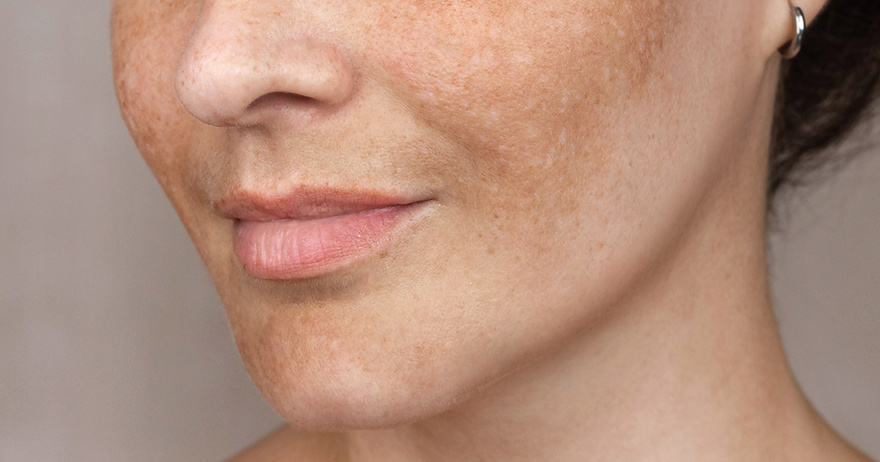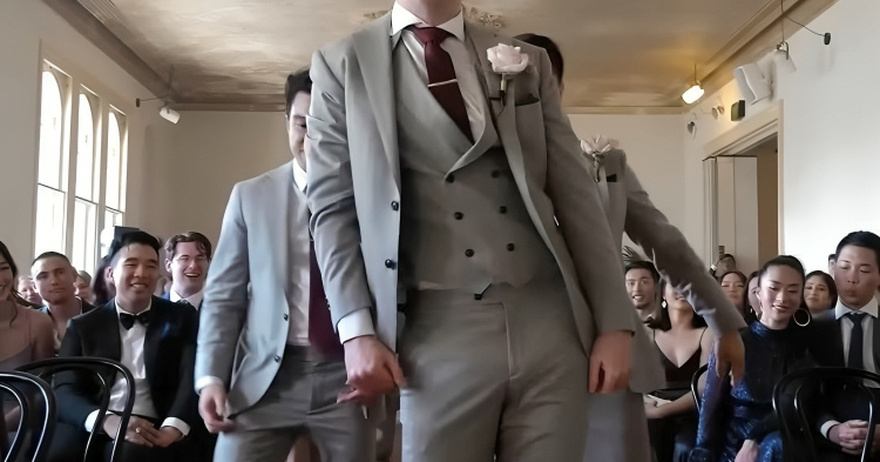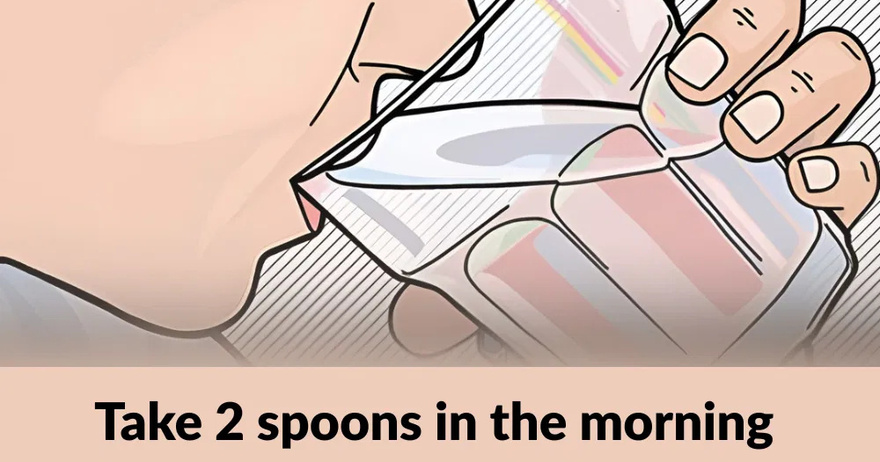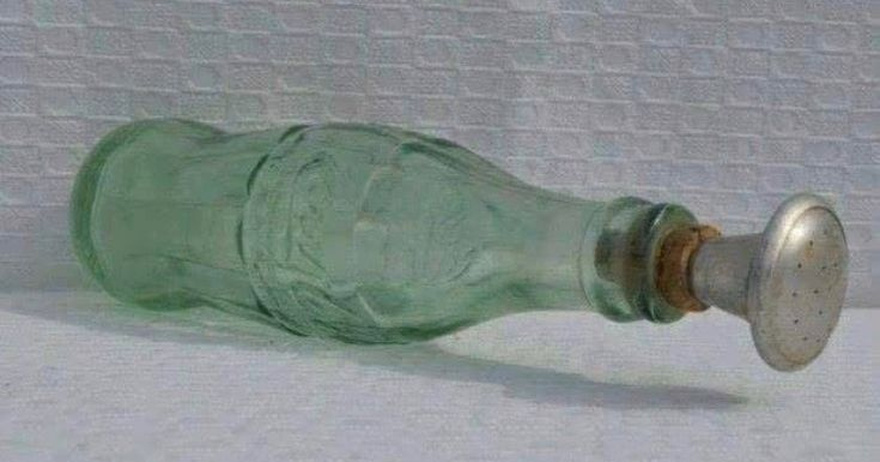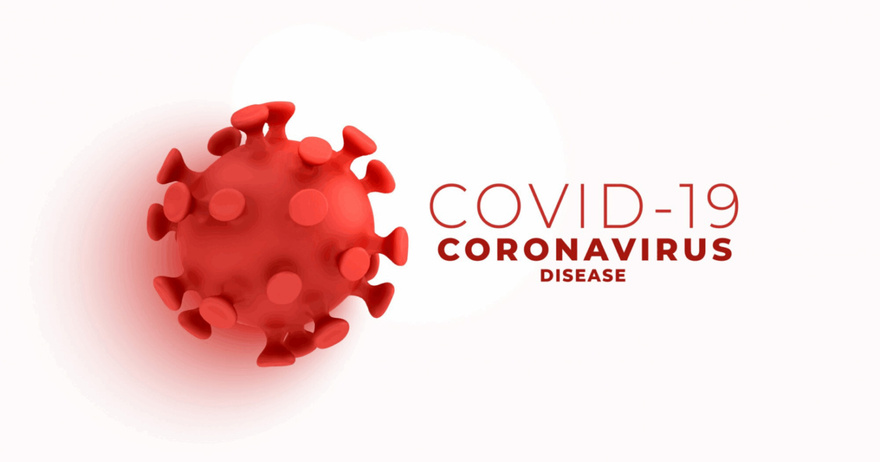Aging is both beautiful and a privilege. Though we often complain about old age and the things that come along with it, the reality is that many of us are not so lucky as to reach an age in which they can complain of these things. That being said, there is a difference between fighting our age and stressing over it and doing things so that as we age, we do so in a way that maintains our health and vitality. Our skin is a major part of that. One of the most common grievances with aging skin, that cause many people to feel rather self conscious, are what we call age spots. Thankfully, there are plenty of ways to both prevent and treat these spots so that you can feel confident in your skin and maintain the health of your skin long into old age.
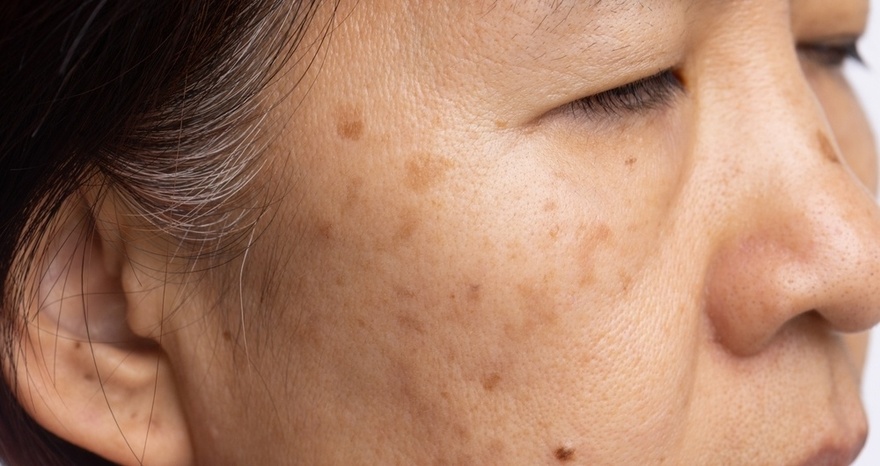
Also known as liver spots, sun spots, or solar lentigines, these are darker spots that appear on the skin as we age. They are more commonly seen in adults over the age of 50 but also can appear in younger people who have had a lot of exposure to the sun. Age spots are not necessarily dangerous to your health and can be treated cosmetically. That being said, if you have a lot of these liver spots, it can make it harder to identify spots that could potentially be life-threatening, such as melanoma spots. Thankfully, the same thing that generally causes age spots is the same that causes skin cancer, and the route to prevention of both of these conditions is more or less the same.
Why Are They Sometimes Called ‘Liver Spots’?

Age spots are sometimes referred to as liver spots. This is due to a historical belief that they were caused by liver problems. However, the term “liver spot” is somewhat of a misnomer, as we now know that age spots are not related to liver function or liver disease. The association likely originated from a misunderstanding of the actual cause of these skin blemishes, which is sun exposure rather than liver health. Age spots are primarily caused by years of cumulative sun exposure, leading to the localized overproduction of melanin in the skin. As a result, the more accurate term “age spot” or ‘sun spot’ is often preferred in dermatology to describe these pigmented skin lesions.
Causes of Age Spots

These hyperpigmented spots that develop do so as a response to high exposure to UV light, aka sunshine. They are essentially overactive pigment cells reacting to sun exposure, purposely darkening your skin in order to protect you from too much sun. They are most common in people with lighter skin colors and are most often seen in areas that experience more sun exposure. These include the shoulders, neck, face, hands, and perhaps the arms and legs. A phenomenon called Melanin clumping, or high concentrations of melanin, also contributes to age spots. Again, this is often in response to sun exposure. Sun isn’t the only culprit, however. The use of tanning lamps and tanning beds, which also use UV light, can cause sun spots. Your history of sun exposure and sunburn can have a big impact on how many age spots you develop, their size, and their color. As already mentioned, this exact same thing is what can cause melanoma, or skin cancer, to develop. This is why preventing age spots is important: Not necessarily so you age ‘well’, as society would put it, but so that you protect yourself from one of the world’s deadliest, yet most preventable, cancers.
Symptoms and Diagnosis

Age spots generally appear as flat, oval-shaped areas of increased pigmentation. The color can range from tan to dark brown. They also range from small, freckle-sized spots to much larger. They can also eventually clump together. Unlike freckles, they do not fade over periods of less UV exposure. While sun spots are not dangerous to your health, it is important to be able to tell the difference between harmless liver spots and potential cancerous growths. Spots that are very dark or black in color could be potentially cancerous. This also goes for any that have changed in appearance, whether that be size, shape, color, or texture. Spots that have unusual coloring, ragged edges, or are bleeding, should all be checked out by a medical professional. Anytime you notice changes in your skin you should speak to your doctor or dermatologist.
Treatments for Age Spots

As already mentioned, age spots are not dangerous and don’t require treatment. If you don’t like the way they look, however, there are things you can do to improve their appearance. They can either be removed or lightened for cosmetic reasons relatively easily. All cosmetic treatments, however, should be done with a skilled, licensed dermatologist. This will usually involve an initial consultation where you will discuss with them the needs of your skin and they will help you to come up with an action plan that is safe, effective, and realistic. Cosmetic treatments for age spots include:
Chemical peels

Chemical peels are a cosmetic procedure commonly used to improve the appearance of age spots and other skin irregularities. During a chemical peel, a chemical solution is applied to the skin, which causes the top layers to shed or peel off. This reveals the smoother, less pigmented skin underneath. The chemical solution used in the peel can vary in strength, with superficial peels targeting mild discoloration and deeper peels penetrating more deeply to address more severe pigmentation issues like age spots. Chemical peels help to fade sun spots, reduce pigmentation, and improve skin tone and texture by promoting skin cell turnover and stimulating collagen production. Again, this is a procedure that should be done by a licensed dermatologist.
Dermabrasion

Dermabrasion is a cosmetic procedure used to improve the appearance of age spots and other skin imperfections. During dermabrasion, a dermatologist uses a high-speed rotary instrument with an abrasive wheel or brush to gently remove the top layers of the skin. Essentially, they are effectively “sanding” down the pigmented areas. This process promotes the growth of new skin cells and smoother skin with a more even tone and texture. By targeting the outer layers where age spots are located, dermabrasion can help to diminish the appearance of age spots and improve skin discoloration. It is important to note that dermabrasion is an invasive procedure that requires careful consideration and consultation with a qualified dermatologist to determine the suitability and potential risks for individual skin types and conditions. Aftercare and sun protection are crucial to the success of dermabrasion in treating age spots. Make sure you choose a dermatologist with whom you feel comfortable and taken care of, and who has a good track record.
Laser resurfacing

Laser resurfacing is a popular cosmetic procedure used to target age spots and uneven skin tone. During laser resurfacing, a dermatologist uses focused laser beams to precisely remove the outer layers of skin containing age spots, scars, and other imperfections. This process stimulates collagen production and encourages the growth of new skin cells, resulting in a smoother and more even skin surface. The targeted laser energy breaks down excess melanin responsible for age spots and promotes the natural healing process. This leads to a reduction in pigmentation and an overall improvement in skin appearance. Laser resurfacing can be customized to address specific areas of concern and varying levels of pigmentation, making it a fantastic, more personalized treatment. However, it is essential to consult with a dermatologist to determine the most suitable type of laser treatment for individual skin needs and to follow proper post-treatment care guidelines for optimal results.
Skin Biopsy

A skin biopsy is a medical procedure that involves the removal of a small sample of skin tissue for examination under a microscope. While skin biopsies are typically used to diagnose skin conditions, they can also be utilized to evaluate suspicious or changing age spots. During a skin biopsy, a dermatologist will numb the area, remove a small piece of skin, and send it to a laboratory for analysis. By examining the skin tissue closely, pathologists can determine the nature of the age spot, whether it is benign or potentially harmful, and recommend appropriate treatment options if necessary. This is not necessarily a treatment option to remove or improve the look of all of your sun spots. Rather, skin biopsies can provide valuable information about the underlying causes of age spots, helping to guide further management and ensure proper care for individual skin concerns. If you have any concerning age spots or skin changes, it is essential to consult with a dermatologist for a thorough evaluation and to determine if a skin biopsy is needed for accurate diagnosis and treatment planning.
Prevention of Age Spots

Though the aforementioned treatment options for liver spots are widely available, they can be very expensive. What is less expensive, and better for your overall skin health, is to prevent these spots from forming in the first place. This is, of course, referring to sun protection. While exposure to sun and UV light is important for the synthesis of vitamin D, we actually don’t need that much exposure to synthesize the amount we need. The length of time and how much skin needs to be exposed will depend on a variety of factors. These include where you live, time of year, time of day, the particular UV index at the time, and your personal level of skin pigmentation. People with very light skin tones will require shorter amounts of time with their arms and legs exposed to achieve the amount of vitamin D that they need. People with darker skin tones may require three to six times more exposure than those with light skin tones. If you are unsure, speak with your dermatologist.
Typically, if you are wanting to avoid age spots, the best thing to do is limit UV light exposure. First and foremost, this means skipping the tanning beds. Second of all, this means skipping ‘tanning’ in general. No more tanning oils or sunscreen with an SPF of less than 30. It is generally recommended to avoid sun exposure between 10am and 2pm, when the UV index is highest. Use a broad-spectrum sunscreen with a minimum of SPF 30 and reapply often. Generally it is recommended to reapply every two hours, or immediately after swimming or excessive sweating. Physical protection in the form of hats and clothing that provides UV protection is the gold standard. In hot, sunny climates, consider using wide-brimmed hats and loose, light-colored clothing – long sleeves and pants are best.
Zinc’s Role in Age Spots

Zinc is an important mineral and micronutrient that plays a crucial role in maintaining skin health. It is essential for promoting collagen synthesis, which is the component of sin structure that provides strength and elasticity. Collagen naturally decreases as we age, so promoting its production helps your skin look smooth and fresh. By supporting collagen production, zinc contributes to the maintenance of healthy skin and the repair of damaged tissues, making it vital for skin regeneration. Additionally, zinc oxide, a common derivative of zinc, is widely utilized in sunscreens for its UV-protective properties. There are essentially two types of sunscreens: Chemical, and physical. Zinc-based sunblock acts as a physical barrier, reflecting and dispersing harmful UV radiation. Not only does this safeguard the skin from sun damage, which can lead to the formation of age spots, but it avoids the use of chemicals that may or may not be good for our health.
Zinc supplements and topical zinc-based creams and ointments may help in the management of age spots. Zinc has been used in dermatology for a variety of conditions, including pigmentary disorders like melasma, so it could potentially also help in addressing age spots. A study from the National Center for Biotechnology Information looked at the therapeutic uses of topical and oral zinc for various dermatological conditions, underscoring its versatility and potential applicability in managing age spots. While oral zinc supplementation are less understood in this context and may or may not aid in addressing underlying deficiencies that could contribute to skin pigmentation issues, topical zinc formulations can directly target age spots. This is done potentially through its antioxidant and skin-regenerative properties. As always, consult your doctor or dermatologist before taking any oral supplement or topical, over-the-counter treatment to ensure that it is right for you.
Natural Remedies for Age Spots

A quick search online, and you will find plenty of websites and social media accounts that will promise incredible results using ‘natural remedies.’ These natural remedies, like lemon juice, apple cider vinegar, aloe vera, and green tea, have gained popularity for their potential to reduce the appearance of age spots. Lemon juice contains citric acid and vitamin C, which are believed to have skin-lightening properties that may help fade age spots over time. Similarly, apple cider vinegar is often touted for its acidic nature, which can exfoliate the skin and potentially lighten pigmentation. Aloe vera is known for its soothing and moisturizing properties, which may aid in improving skin texture and reducing the visibility of age spots. Green tea, rich in antioxidants, has been studied for its potential to protect the skin from UV-induced damage and may have skin-brightening effects, therefore also potentially benefiting age spots. The thing is, none of these are necessarily wrong. They can, in fact, have plenty of benefits for the skin. If you have a large quantity of fairly dark sun spots and other pigmentation problems, they can’t replicate the results of actual dermatological procedures.
It is also crucial to remember that just because something is natural, doesn’t mean it can’t have negative effects on your skin and health. The same goes for all of these natural remedies for age spots. While they can have benefits for the skin, if done incorrectly that can do more harm than good. It is always a good idea to consult a healthcare professional before trying them. While generally considered safe, natural ingredients can still cause adverse reactions or interactions with existing skin conditions or medications. Your dermatologist or doctor can help you determine whether these natural remedies are right for you based on your individual skin type, sensitivity, and overall health. They can also help to guide you on the proper application and dosage of these remedies to maximize potential benefits while minimizing risks. In cases where age spots are persistent, rapidly changing, or cause concern, seeking professional medical advice is recommended to explore effective treatment options tailored to specific needs.
The Bottom Line

Age spots are a natural factor of aging and are nothing to be ashamed of. If you grow old enough to have them, it means that you spent your younger days outside enjoying the sunshine. That being said, it is perfectly normal to want to prevent them or decrease the appearance of ones that you may already have. The good news is that the same steps you should take to prevent and treat age spots are the same for preventing and detecting skin cancer. Don’t buy into the hype that being tanned is better: Your skin color is beautiful, no matter if you are very light-skinned or very dark. Regardless of the color of your skin, protecting your skin from UV damage should be a priority for all of us. As always, before starting any new treatment for sun spots, whether it is natural or not, speak with a qualified dermatologist. They will help to guide you as to what treatment options are best for you.
Wendy’s Reacts to Backlash Over Joke About Leaving Katy Perry in Space: ‘Always Bring a Little Spice’
Michael Bublé Is Living The Good Life With His Family In A Multi-Million Dollar Mansion In His Hometown.
Dolly Parton’s best duet yet: ‘There Was Jesus’
Grooving Groom Daniel Lewis’s Epic Dance Entrance With His Boys Makes Wedding Goes Viral.
